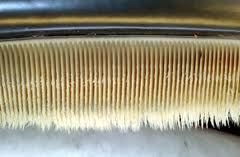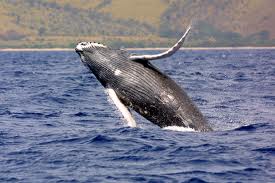Daily Update 3.6
Week 6: Module 3: Date 3/6/13
Whales.
If you have ever had the privilege to see a whale in the wild you know this is truly an amazing experience. The size and grace of these animals are quite spectacular. The crew of the JRH has had the opportunity to see a number of whales on their voyage so far. Seeing whales while in such a small craft as the JRH, must be both thrilling and slightly terrifying. The most recent sightings have yet to yield any pictures so we will have to try and imagine what the crew saw. We are going to learn a bit about the different types of whales that frequent those waters.

There are many species of whales, which are split into two suborders, Baleen (Mysticeti) and toothed (Odontoceti). Odontoceti also includes dolphins and porpoises. We will first look at the baleen whales. These whales are the larger of the two suborders ranging from the largest known species to have ever existed, the Blue whale, to the Minke whale, which is about the size of a small bus. They have no teeth but instead have baleen.

Baleen is a filter system inside the whale’s mouth. The whale opens its mouth, bringing in a large amount of water, then closing its mouth and forcing the water back out leaving just the food, such as krill, inside. The baleen whales that frequent the mid-Atlantic are the blue, bryde’s, fin, sei, and humpback (below).

The toothed whale suborder is much larger but contains just a few large species. Those include the orca or killer whale, the false killer whale, the long-finned and short-finned pilot whales, the beluga and the narwhal.
![narwhal2_Paul_Nicklen_Natgeo_[1]](https://oarnorthwest.com/wp-content/uploads/2013/03/narwhal2_Paul_Nicklen_Natgeo_1.jpg)
The rest of this suborder is made up of dolphins and porpoises. If we leave these out, the only species that frequent the waters traveled by the JRH are the orca and the short-finned pilot whale. When most people talk about whales they are usually referring to the larger baleen suborder, which is the classic image of whales. Hopefully in the next few days the crew will be able to get some images of the whales that they have been seeing and we will try and identify them.
Sources:
http://www.whale-world.com/whale-species.html
